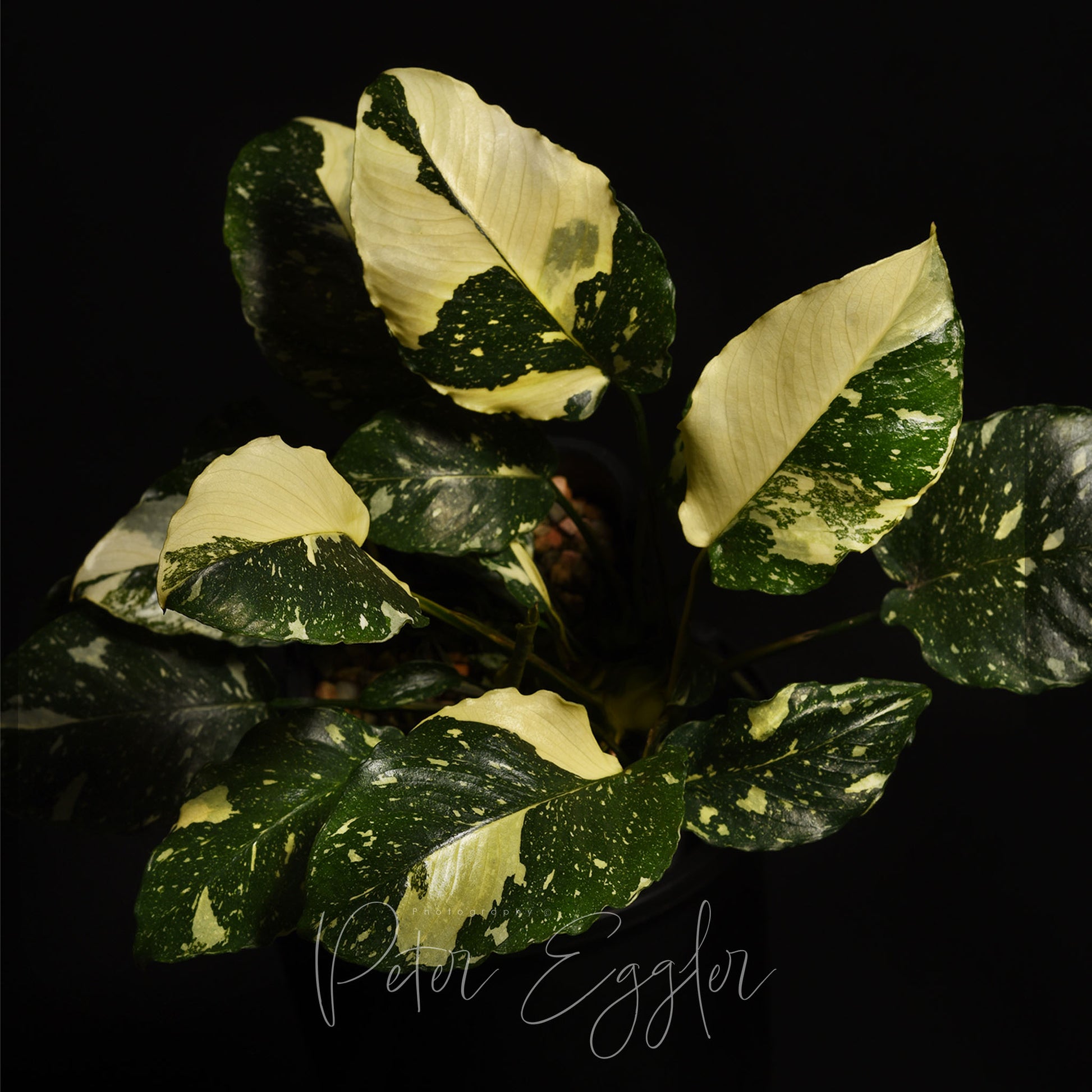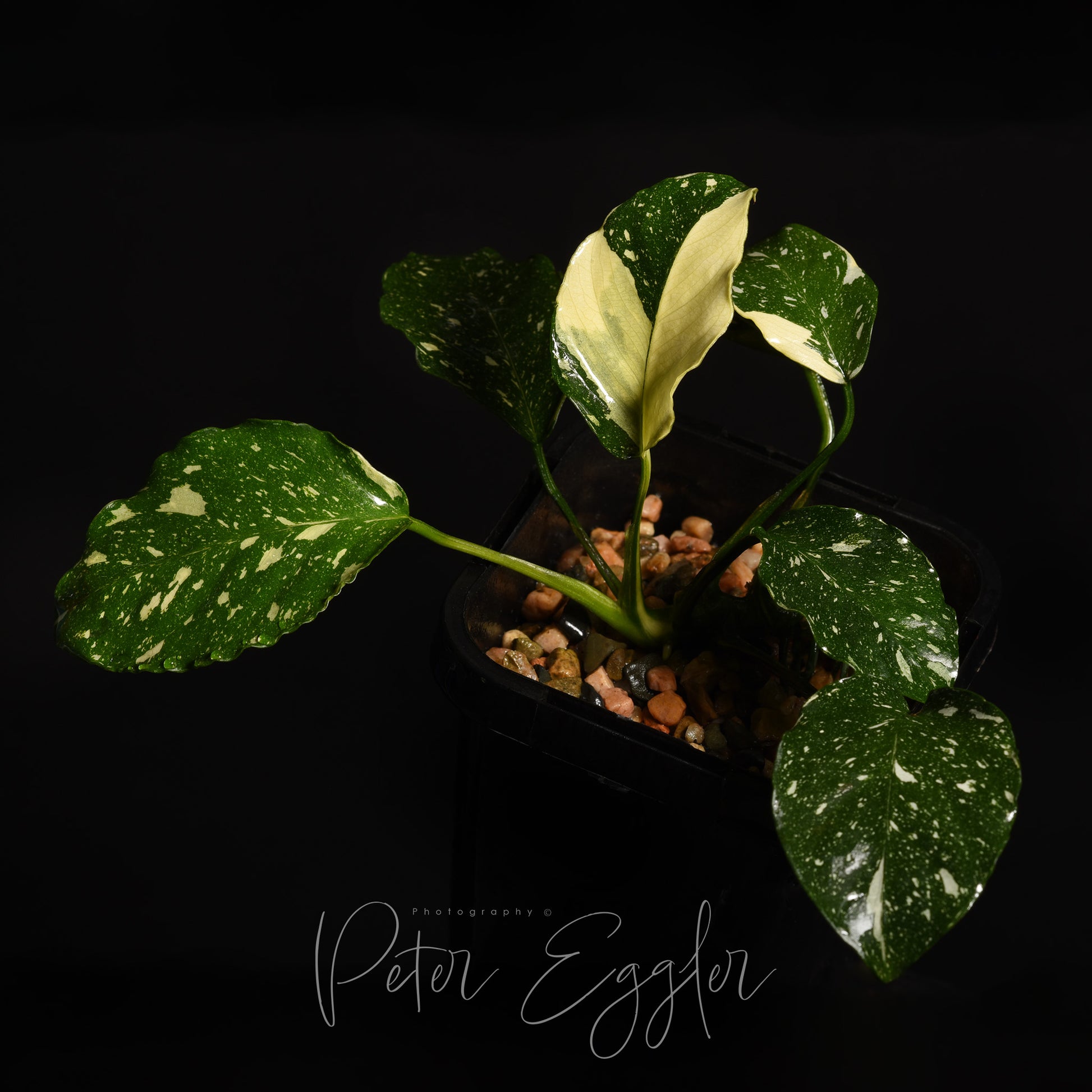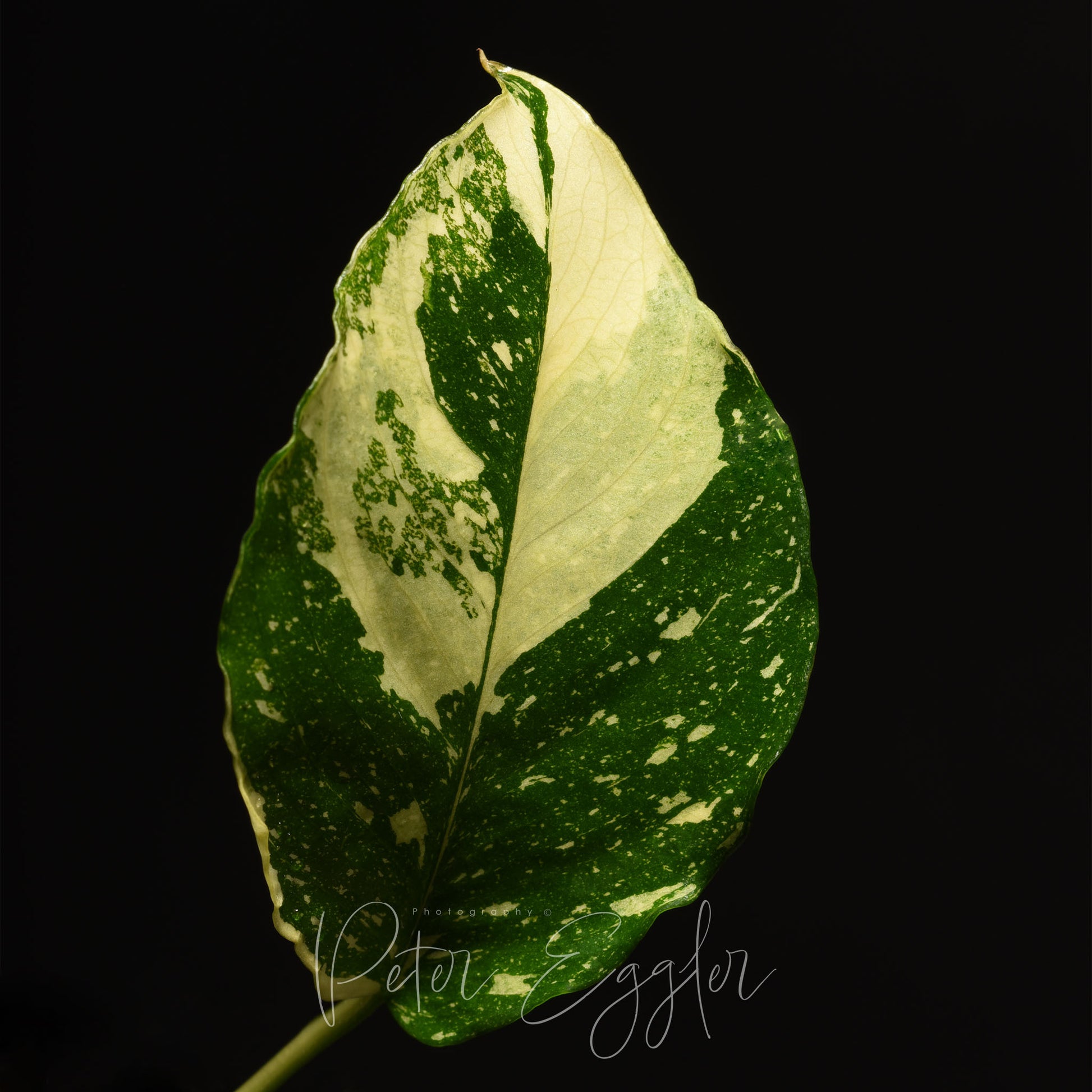Anubias 'Panda'
Anubias 'Panda'
Out of stock
Plant Size/Portion Size:
Plant Size/Portion Size:
Couldn't load pickup availability
Plant Name: Anubias ‘Panda’
Tankquility Catalogue #: TQ-00876
Synonyms/Trade Names:
Original Plant Sourced as: Anubias ‘Panda’
Plant Family: Araceae
Plant Native to1: Cultivar. The origin of this plant is unknown. Not to be confused with another Anubias labelled as ‘Panda’ - Anubias barteri var. caladiifolia ‘Panda’ (see Moscow Aquarium Plants website http://staraqua.ru/).
Plant Type: Semiaquatic
Image Details2:
Image 1: An emerse grown plant of Anubias ‘Panda’ with particularly attractive variegation.
Image 2: Small emerse grown plant of Anubias ‘Panda’.
Image 3: Intricate leaf variegation typical of Anubias ‘Panda’. The leaf belongs to an emerse grown plant.
General Information and Cultivation3: A slow growing plant in both emerse and submerse conditions, requiring greater care than most Anubias to look its best. Spectacular patterns of variegation reward the grower who maintains optimum conditions, making Anubias ‘Panda’ a showstopping centrepiece plant for aquarium, terrarium and paludarium. Provide submerse plants with good lighting and CO2 injection. Maintaining unblemished variegation in emerse plants requires more subdued light levels (not too high to burn variegated leaf tissue) and high humidity with daily misting. Attach to wood and rocks, or plant directly into the substrate. Do not bury the rhizome or it may rot. In emerse culture, leaf blades grow to about 90mm×60mm and plants can attain a height of 150mm. Submerse plants produce leaves that are smaller.
Ease of Care: Medium
Plant Size/Portion Size:
Emerse grown plant (S): 4 to 5-leaf, pot grown plant with good root development, 40mm-60mm in height.
Emerse grown plant (L): 4 to 5-leaf, pot grown plant with good root development, minimum 80mm in height.
Further Reading:
1 Distribution is taken from Plants of the World Online (https://powo.science.kew.org/) unless stated otherwise.
2 All images used on the Tankquility website have been taken of plants growing in our nursery.
3 The general and cultural information provided is based on our own experience and observation. If we supply information from others, we have acknowledged the source.
SKU:
View full details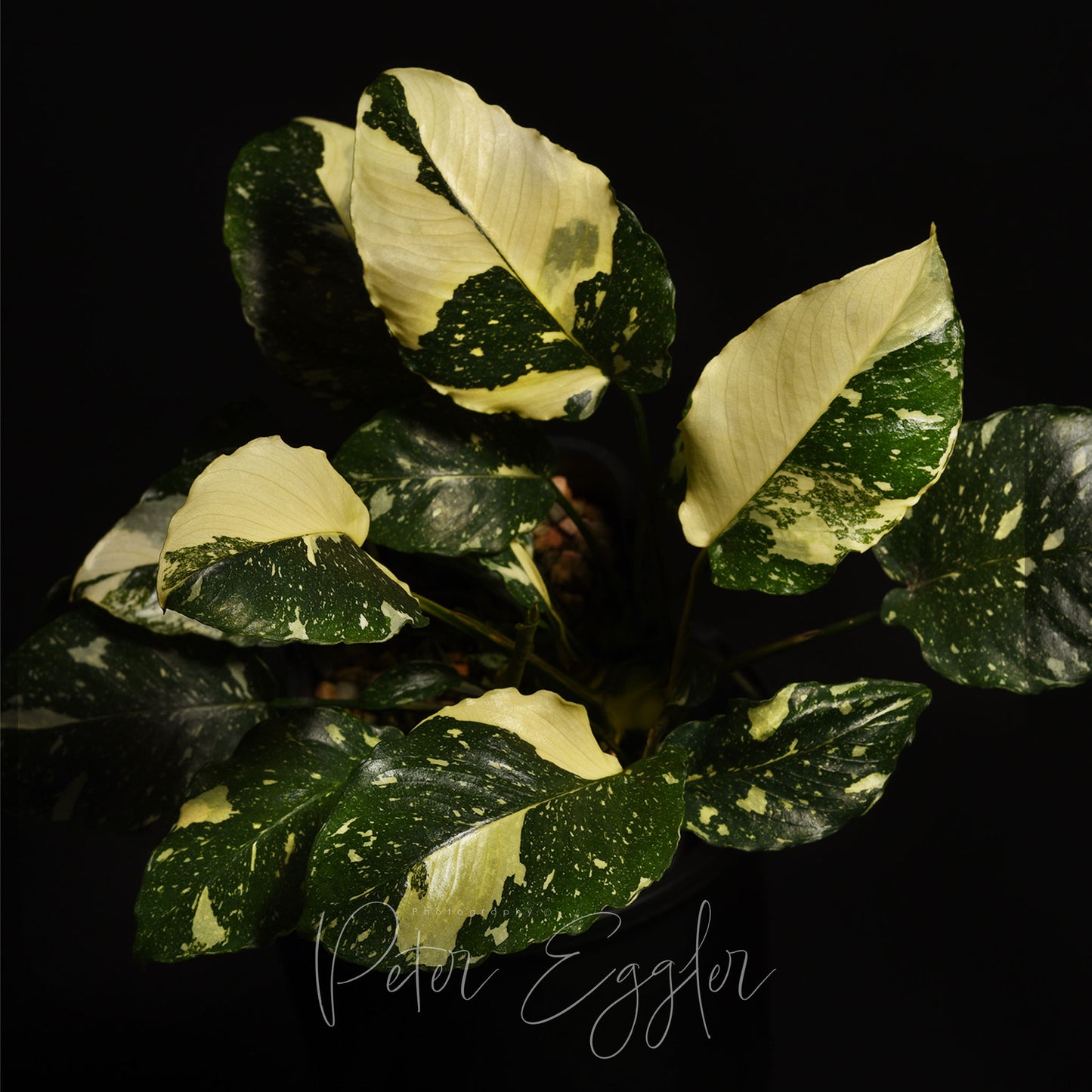
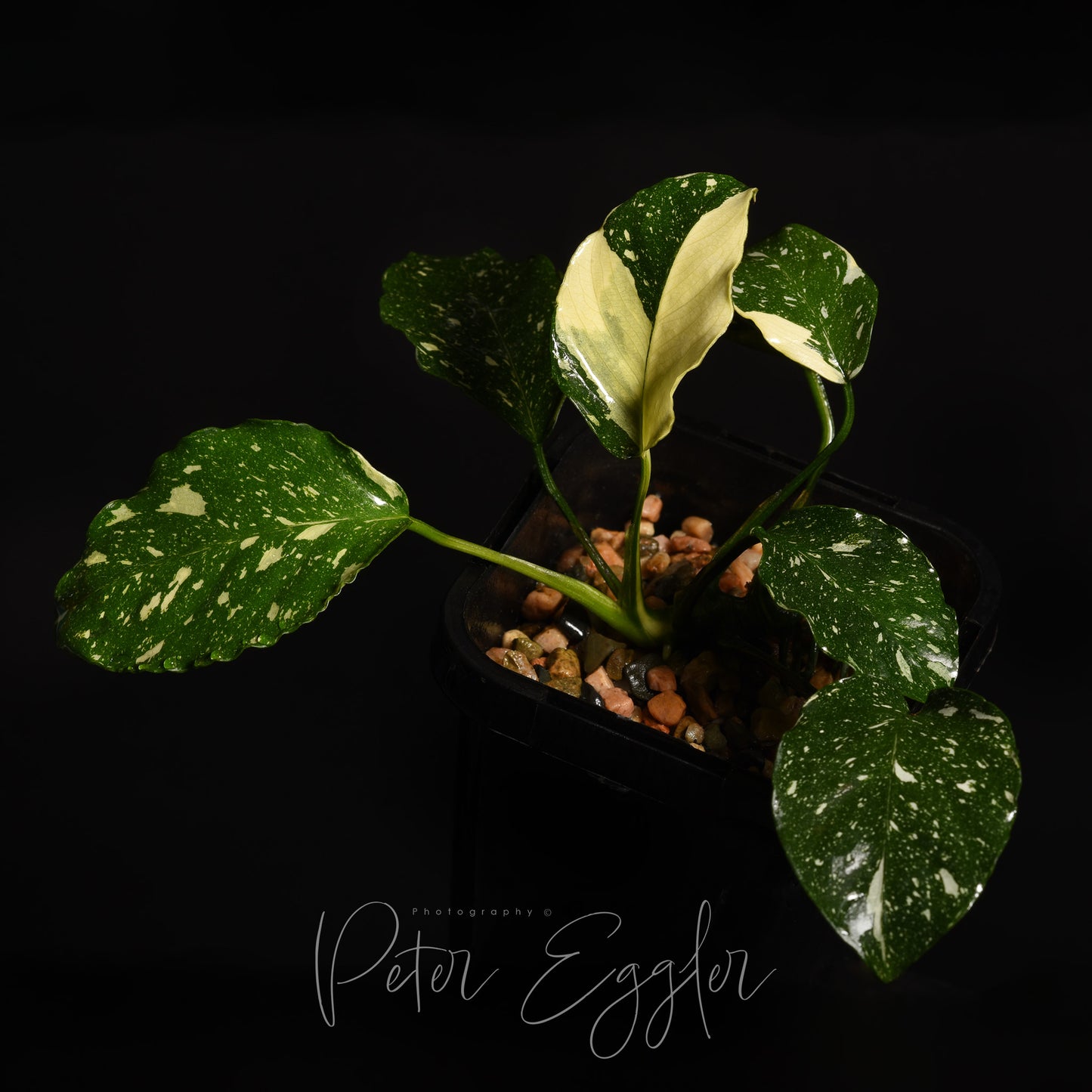
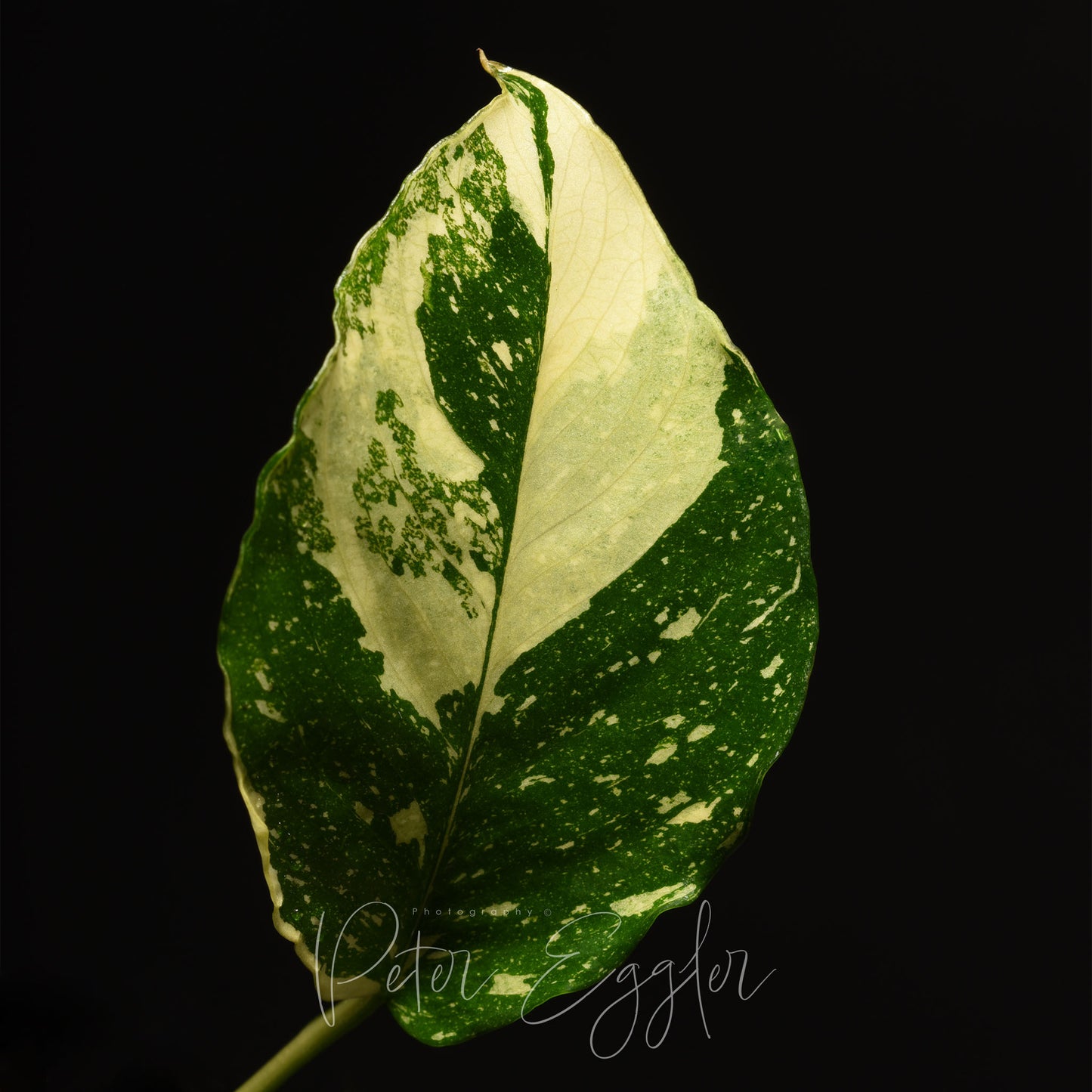
-
Plants can alter their appearance due to seasonal influence, or in response to different environmental conditions or stage of maturity. This phenomenon is known as phenotypic plasticity, and it is especially evident in Aquatic/Semiaquatic plants. Whilst we endeavour to portray a plant accurately, the plant you receive may have been growing under different conditions or be at a different stage of maturity to the one in the image(s) provided.
How we package your plants...
-
Aquatic/Semiaquatic plants will be shipped bare-rooted and wrapped in damp paper for protection when required.
-
Terrestrial/Epiphytic plants will be shipped bare-rooted and the roots wrapped in damp sphagnum moss for protection when required.

